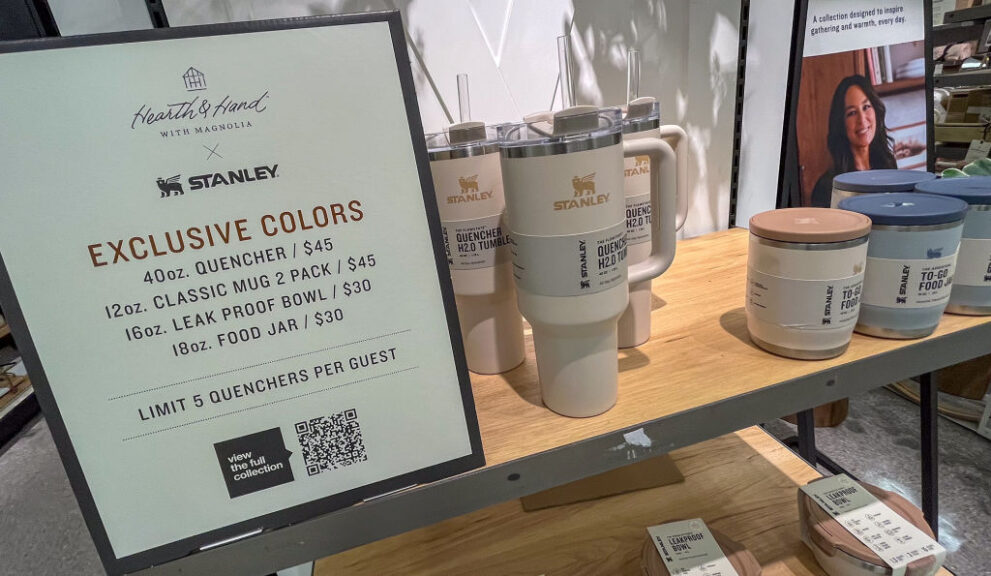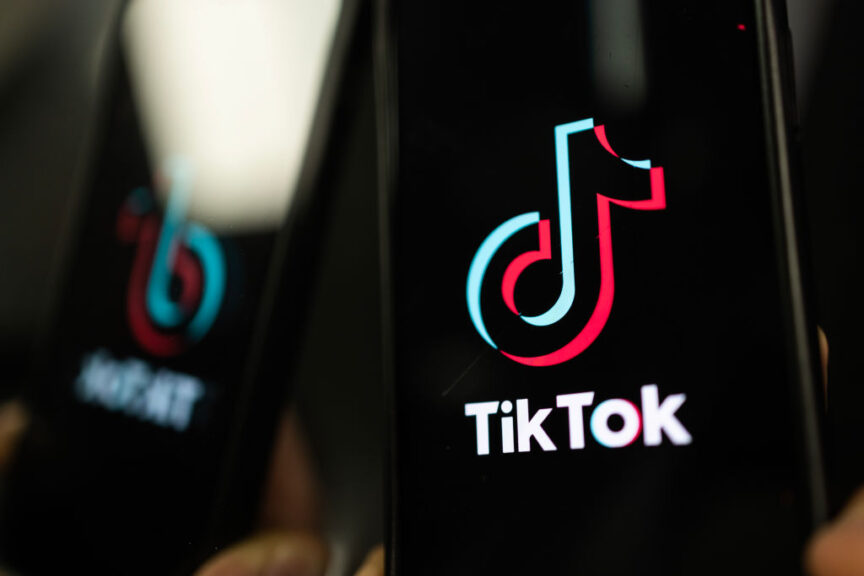In December, a 13-year-old Australian girl’s Christmas list went viral.
The teen had reportedly requested a slew of expensive items for under her tree including Skims shaping undergarments, Drunk Elephant and Dior luxury skincare, high-priced Lululemon activewear, designer clothing, silk pajamas, a MacBook Pro, and, inevitably, a Stanley Quencher H2.0 FlowState Stainless Steel Vacuum Insulated Tumbler.
Children with overly demanding Christmas lists are nothing new. But while greedy kids of yesteryear added a bunch of overpriced toys to their lists, teens and even pre-pubescent girls today are asking for items better suited to women in their 30s and 40s.
The reason for this has almost everything to do with social media influence. While teens have always been highly susceptible to peer pressure, thanks to the advent of apps like Instagram and TikTok, those social circles have widened to include the entire world.
This phenomenon has curiously pushed pre-teens and teens into a world far beyond their years. Now instead of asking for glittery Caboodles makeup cases, they’re demanding Dior lip oil (which costs $40). Instead of heading to stores like Justice or Aeropostale for age-appropriate basics, they’re plunking down their parents’ credit cards at Lululemon.
It’s hard to overstate the power of social media’s influence on teenage consumers. Delving into the Stanley cup phenomenon gives a brief glimpse into how a single product can become a must-have commodity across all age demographics, including those easily swayed teens with money to burn – even if that’s their allowance money.

Brian van der Brug / Los Angeles Times via Getty Images
The Stanley brand has been around since 1913 but they’ve only recently become a red-hot consumer product. The company’s 40 ounce insulated tumbler was initially a flop when it debuted in 2019 to the point that it was temporarily discontinued. Then, thanks to the cup being promoted on a mommy blog and the introduction of some fun new colors, that single product has spurred the company’s profits from $70 million in 2019 to $750 million in 2023, as The Daily Wire previously reported.
During the January release of a limited edition pink Stanley cup at Target, people camped out overnight with the intention of getting their hands on one of these coveted cups. There were long lines and some fights for the Stanley, which unsurprisingly sold out in minutes both in stores and online.
Teens are just as enamored by this $45 cup as everyone else, which is why the Australian schoolgirl included it on her list. And she wasn’t the only one.
CLICK HERE TO GET THE DAILY WIRE APP
A Today report on the Stanley craze featured a TikTok video of a very young girl crying tears of joy upon unwrapping her new cup.
The same article mentioned a story about TikTok user Dayna Motycka saying she purchased a cheetah print insulated tumbler from Walmart as a Christmas gift for her 9-year-old daughter, but the little girl came home “upset” when her peers “made sure to let her know” that it wasn’t a “real” Stanley cup. The girl’s classmates told her the cup was “fake” and “not as cool.”
“Do I think that a nine-year-old needs a Stanley? No. Do I have one? Yes, I have one,” Motycka said in the video. “I don’t have 50 Stanleys in all different colors. I’m not going to Target and fighting other women or moms to try and get the new Valentine’s Day Stanley. I have one.”
Eventually, she did buy her daughter the name brand insulated tumbler.
“Can we afford to buy her a Stanley? Yes. Did I think that she needed one? No,” she said. “Apparently I’ve been proven wrong by the children in our school that are making fun of her for not having a real name-brand Stanley.”
The Stanley obsession is silly and frivolous but is also arguably harmless. Who really cares if a bunch of teens are enamored with overpriced beverage holders?
That may be true, but some social media trends resonating with teens have potentially harmful consequences. For example, a Federalist report about how TikTok killed the preteen era mentions that many of these young girls are using skincare products made for much older women. This may not matter when it comes to lip gloss, but it’s a big deal when these girls start regularly experimenting with products such as chemical peels.
The article points to a now viral TikTok video featuring a nine-year-old customer shopping for Babyfacial, a chemical exfoliant from the brand Drunk Elephant. The product claims to minimize “the look of pores, fine lines, and wrinkles.” The little girl said she used the item “daily.”

Dan Kitwood/Getty Images
The Sephora employee who made the video also mentioned how she has seen “15-year-olds… com[ing] in with chemical burns” while working there.
There’s also the much more worrying TikTok trend which includes young girls diagnosing themselves with serious mental health conditions by observing others on social media.
“What they are doing is they are going into the interactive media space to soothe themselves, to make themselves feel better, to make themselves the master of that environment when they don’t feel that they’ve mastered the environment of the outside world,” Dr. Michael Rich, director of the Digital Wellness Lab at Boston Children’s Hospital, said of this new trend, per CBS News.
“There is a demand that’s being filled by people now. The question really is, is how well and how safely is it being filled?”
“What’s online is a free-for-all. There really is no accountability for this and there is no responsibility taken,” Rich added.
It’s no coincidence that the rise of TikTok has coincided with an absolute explosion in very young children experiencing Rapid Onset Gender Dysphoria. Cases of “gender dysphoria” rose in every state except one over the last several years, with an estimated 300,000 minors aged 13 to 17 identified as transgender as of 2022, and the number has only continued to rise.
While LGBTQ activists will argue that this phenomenon doesn’t exist or isn’t relevant, the public only needs to look as far as little girls weeping over an insulated cup to see that the power of social media influence over children is very real indeed.

Continue reading this exclusive article and join the conversation, plus watch free videos on DW+
Already a member?

.png)
.png)

